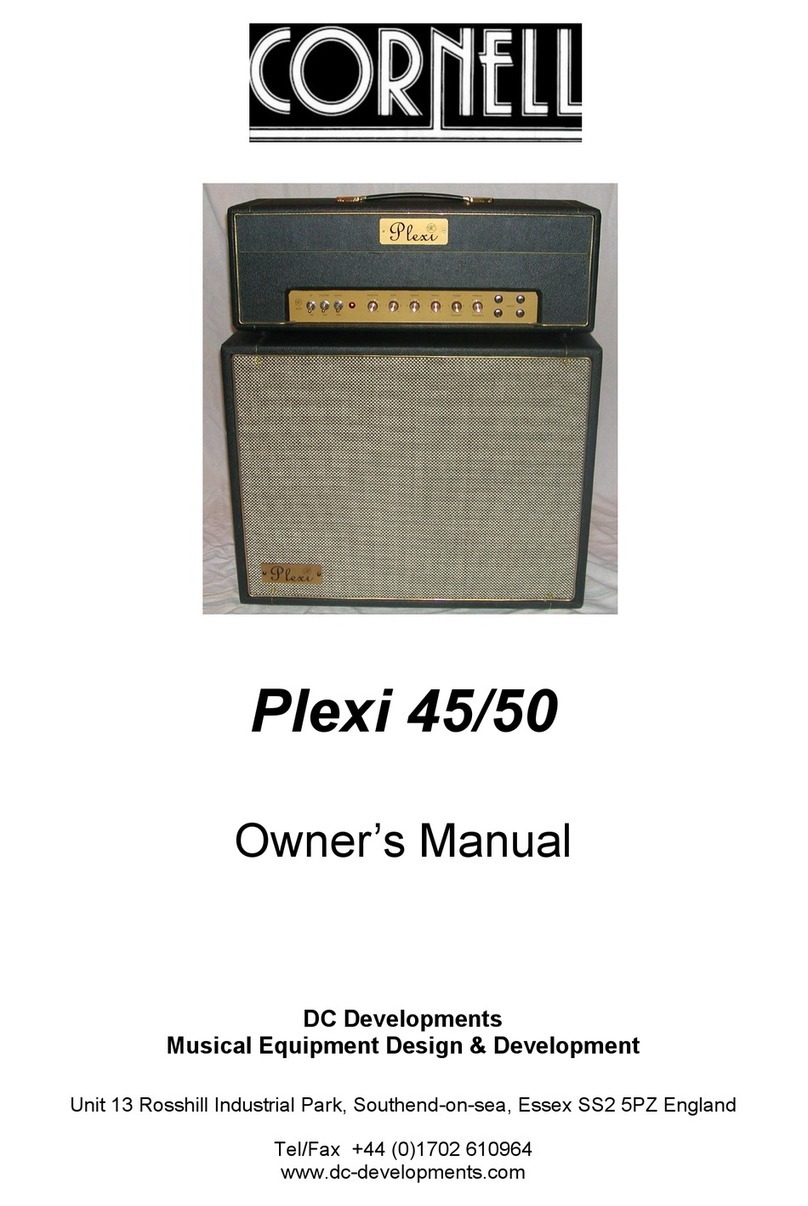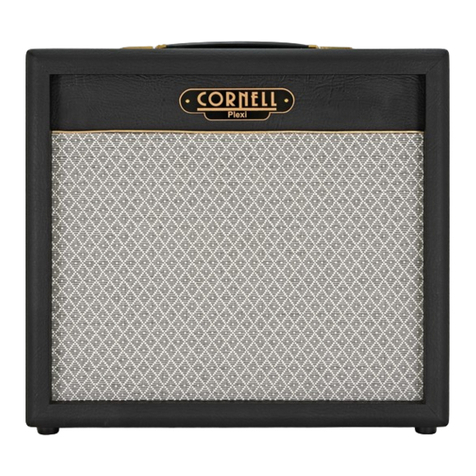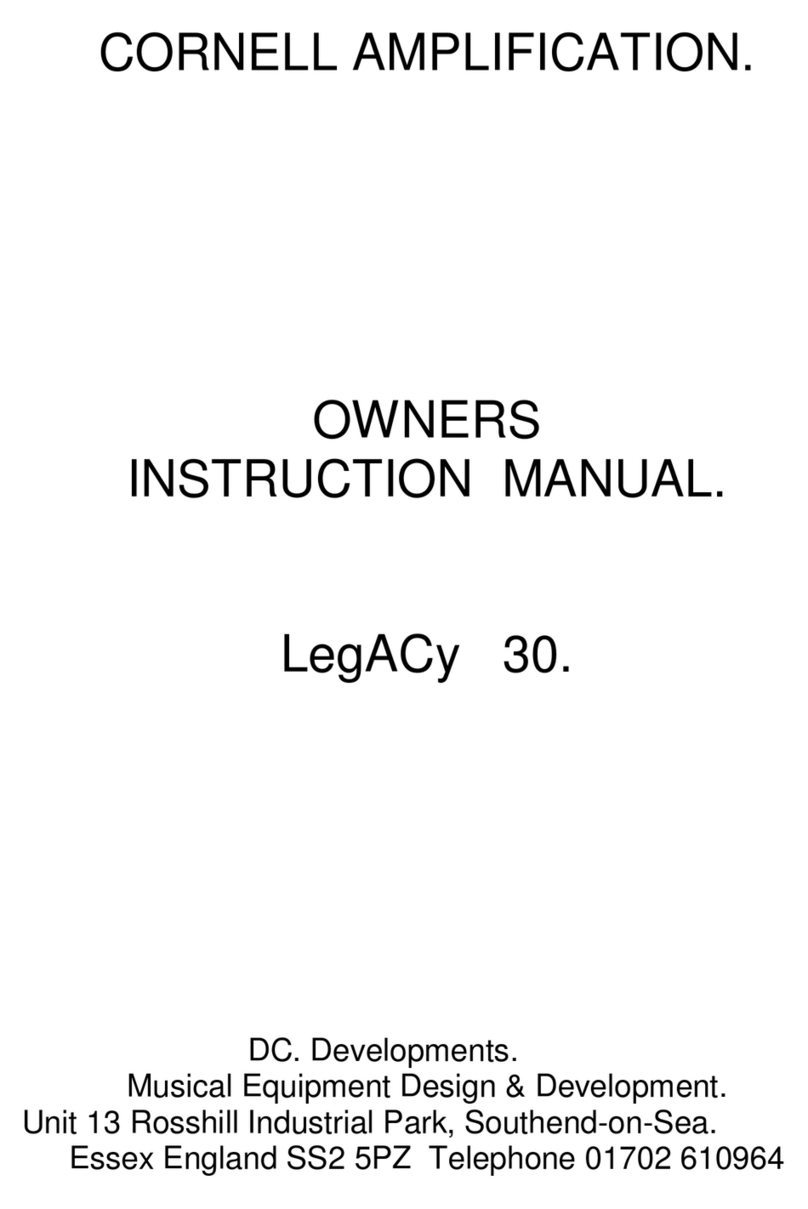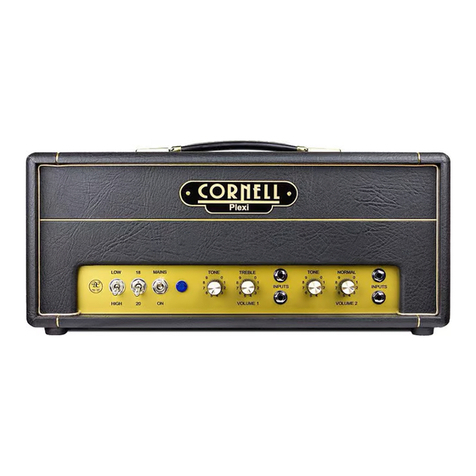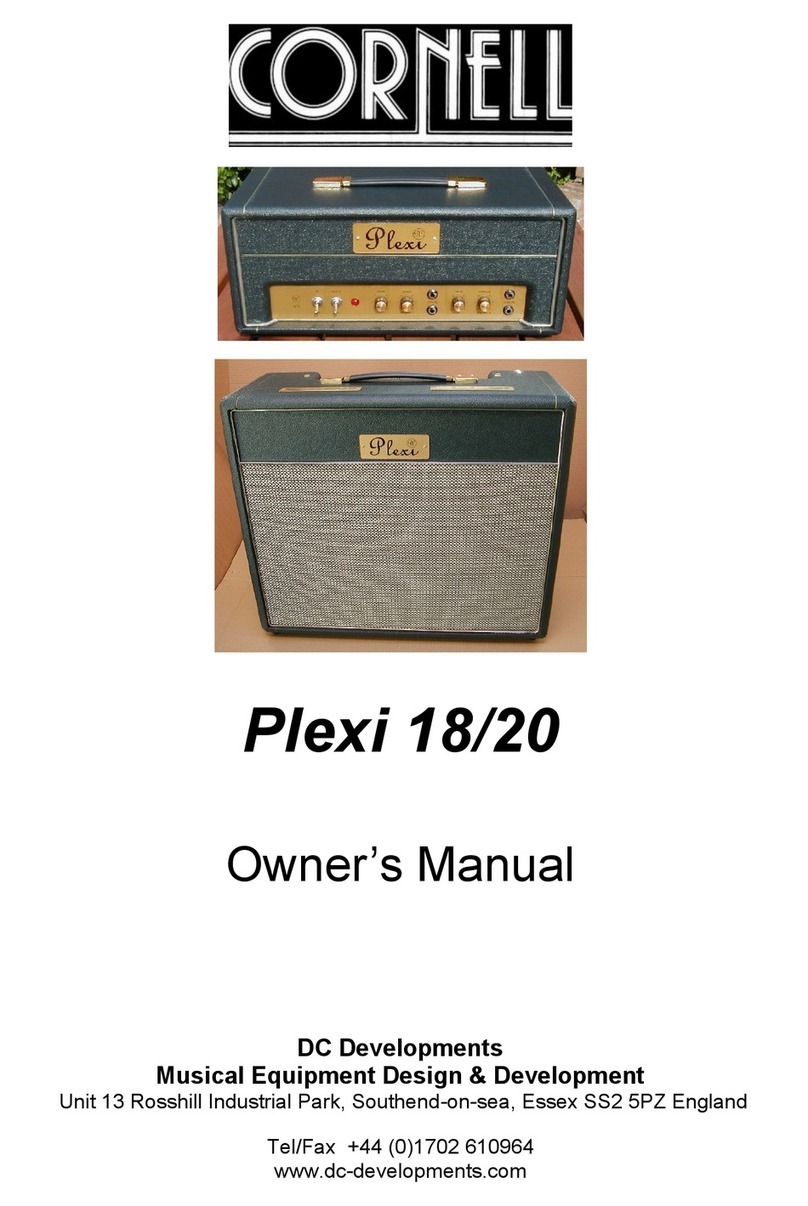
TECHNICAL DESIGN
The Pre-amplifier
The custom 80 is designed to be simple in use, and yet produce the wide range of sounds that
the musician of today expects from a professional amplifier.
The ‘BASS’ and ‘TREBLE’controls work over the entire frequency range of your guitar,
allowing for increased amounts of low and high frequency adjustment.
The Output Stage.
Part of the output transformer of the custom 80 is a small independent winding that picks up
the signal being produced in the final stage of the amplification process. As the winding is in
the output transformer itself, it will exactly reproduce, the speakers signal. This output is
used to feed the line output , reproducing the sound of your guitar as accurately as possible.
These output are ‘off-ground’ ensuring that no earth loop can be produced, when they are
connected to a mixer or power amp.
The custom 80 amplifier output stage is Class AB1, This means that the
grids of the output valves are controlled by a negative voltage. This is
known as the bias voltage.
The method used in biasing greatly affects the tone of the amplifier. Should the bias be set to
high - cross-over distortion occurs and is constantly present in the sound of the amplifier,
creating a ‘fuzzy’ tone. If set to low, then the valves might start to ‘glow red’. This will
considerably reduce their life and result in expensive replacement. It is recommended that a
Qualified engineer re-bias the output valves when changed.
Tube Replacement
Tube life varies depending upon playing style and application. Power tubes have a
much shorter life than pre-amp tubes which can last for years.
To maintain the optimum performance of your amplifier, the tubes should only be
replaced with the same type tubes as specified below.
Your Custom 80 amplifier has 7 valves three pre-amp valves 12AX7 or ECC83, and
four power valves 6L6.
Warning
When changing tubes, ALWAYS unplug the amplifier and remember that the
TUBES ARE HOT! wait for the tubes to cool or replace tubes when amplifier has not
been used for several hours.
